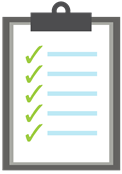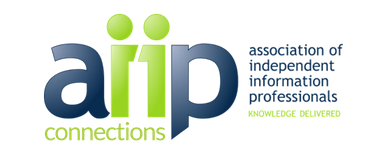AIIP BLOG LEGACY CONTENT from January 2021

Editor’s note: Occasionally we post legacy content that is still relevant today. Enjoy this piece By Kelly Schrank.
Before I get started, I want to offer this disclaimer: I know that lots of people like checklists! People have TO-DO lists for daily tasks, they have packing lists for travel, they use grocery lists. But Atul Gawande, a well-known staff writer for The New Yorker and author of four bestsellers, wrote a whole book, The Checklist Manifesto, on how checklists are used by people in a variety of industries to save lives, fly planes, and manage large-scale construction projects. His book covers checklists as people use them in the workplace, and much of the motivation behind how I approach checklists comes from his discussion of why and how professionals use checklists in their work lives.
If you have tasks that you perform repeatedly, like writing or editing a certain type of document, researching a particular topic, putting together social media posts, checking in on your business accounts, or planning events, how can you keep track of both the big and small details involved? Do you have a process with a lot of steps, tasks where you want to track metrics, a system that is not intuitive, or similar tasks with small details that are different? These are all great candidates for a checklist.
Before getting started, let’s set a few ground rules: you need to create them for your use (i.e., don’t use one you find on the internet) and you need to test and rework them to get them right, updating and changing as your needs or the tasks change.
So how do you get started? Here are my tried-and-true steps:
- Choose a task
- Document your actions
- Write down every step
- Type it into a file
- Add specifics (for example, style sheet items for an editing checklist)
- Put steps in the optimal order
- Add mechanics (steps for systems, spell check)
- Add tracking items (start and stop times, level of difficulty)
- Test, Revise
- Use
You might ask, why go through all of this? One big reason is that one checklist for a specific task can incorporate other documents or the details in emails/files all in one place. It can act as a style sheet, provide instructions, and be used as a tracker for your progress as you move through the task. And the other big reason is so you can have these kinds of wins: you find an error the editing checklist told you to look for, you almost forget to do something until your checklist reminded you, you can give a confident estimate because you’ve tracked your metrics, you know you’re done with a task because everything on the checklist is checked.
Not every task needs a checklist, but when it makes sense, take the time to create one. On your good days, you might not feel like you need a checklist, but when life is a little too much, the checklist is there for you, to make you be your better self, every day.
Kelly Schrank has been in technical and medical communication for almost 30 years. She has been a medical editor in the pharmaceutical industry for 15 years, and she freelances through her business, Bookworm Editing Services. An Associate Fellow of STC and a BELS-certified Editor in the Life Sciences, Kelly has presented on editing, checklists, Microsoft products, infographics, side gigs, and networking in webinars and at conferences.





